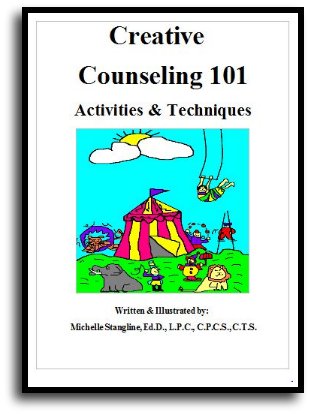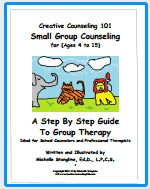The Effects of Chronic Illness on Couples
By Writer-in-Residence Briana Cowles
The University of Georgia
The Effects of Chronic Illness on
Couples
Introduction
A chronic illness, defined as an illness that can last for an extended period, often for life, and cannot be cured, impacts every aspect of an individual’s life (Walker and Marcos, 2002). Additionally, it leaves behind a devastating imprint on the lives of everyone else involved; having both direct and indirect effects on family members and their intimate relationships.
Upon being diagnosed with a severe, chronic illness, it is not unusual for an individual’s family members to feel fear, anger, self-blame, denial, helplessness alongside a host of other emotions (Benson, 2006). It is essential to fully understand how chronic illnesses affect not only the individual, but the relationships within the family as well. When a member of the family suffers from a chronic illness, the family dynamic will drastically change.
Such an illness has an immense impact not only on the development of the diagnosed individual, but also on the individual’s family members and relationships. Research regarding the impact of chronic disease are cross-sectional and focus on elderly patients (Walker and Marcos, 2002).
Generally, research emphases on problems for partners, caregivers’ judgments, characteristics and health of the caregiver, characteristics of the patient and care situation, and finally on the positive aspects of caregiving.
Problems for Partners
In general, the burden of care detracts from the spouse’s (caregiver’s) quality of life. An illustration of this may be derived from the analysis of reports conducted and determined that caring for an incapacitated spouse with dementia noticeably worsened health, impaired social and family life, and amplified stress, anxiety, and depression (Gregory, 2005).
Treatment-related worries, particularly in spouses whose significant other suffers from various forms of aggressive cancer, and concerns about physical limitations and pain were much more prevalent among the spousal caregiver (Northouse, et.al, 2012).
Additionally, these partners reported higher levels of depression, measured on the Center for Epidemiological Studies Depression Scale, than did the patients. These excess manifestations of depression were both somatic – sleeplessness, appetite loss; and affective – crying, feeling dejected (Wadhwa, et.al, 2011).
Multiple studies have also recognized that patients in palliative home-care settings found that anxiety and depression were more common among partners and that the majority of partners made an effort to disguise their feelings. The level of morbidity in caregivers was only slightly less than that found in individuals with severe depression (Wolff and Jacobs, 2008).
These partners who care for their significant other face numerous challenges. They are at an increased risk of feeling socially isolated and find it a struggle to combine the caregiving role with other responsibilities, such as looking after the rest of their family or work stress; often resulting in a spillover of stress from multiple aspects of their lives.
Caregiving can also have critical financial implications, particularly for low-income families where one or both partners- depending on the severity of the illness- may be forced to give up work and costly alterations to the home may be required (Becker, 2001).
Certain diseases present additional challenges. Partners of patients with subarachnoid hemorrhage (bleeding in the area between the brain and meninges that cover the brain and causes decreased consciousness, eye discomfort, nausea, vision problems, and seizures) may be afraid and unwilling to leave the patient alone, especially if they had witnessed the original event (SAH is typically caused by a severe fall), and several other partners express fear of having sex, particularly if the original injury happened during intercourse.
Spouses of patients with Alzheimer’s disease or Parkinson’s describe a feeling of limbo, not widowed but no longer married either, which will persist for several years (Wolff and Jacob, 2008). Patients with advanced stages of dementia typically do not remember who their partners are, leaving their spouse to care for a stranger.
Partners of stroke patients find that the physical dependency, cognitive and communication deficits, alongside psychological symptoms of their spouses meant that the spouse was no longer the same person (Wakefield, et.al, 2011). In these situations, partners would describe a decrease in the marital satisfaction although, by contrast, most patients claim they experience no marital difficulties. (Millen and Walker, 2000).
Caregiver’s Judgments
An additional issue is the impact of the level of responsibility, obligation, and burden on the partner’s perception of the patient. Partners are often requested to make proxy decisions on behalf of patients, such as those patients who are rendered incompetent by reason of mental illness, brain damage, and/or dementia (Wakefield, et.al, 2011).
These judgments can be, and typically are, influenced by the partner’s own personal interests; that is, a partner may covertly request care and treatment options he or she wants for the patient, rather than those the patient would select if able to do so for themselves.
Circumstances such as these are likely to be in accordance to the fact that the reliability and validity of doctors’ and nurses’ assessments of patient quality of life are even lower than those of partners or other proxy assessors.
It is extremely challenging to balance the needs of the partner and the needs of the patient when dealing with the institutionalization and clinical management of incompetent individuals.
One such example of this dilemma is the use of neuroleptic medication in order to reduce agitation in demented patients. This treatment will certainly improve the partner’s quality of life but usually at the cost of decreased mobility, decreased engagement, and further compromised cognitive functioning for the patient (Sells, et.al, 2000).
Upon reviewing these and other studies, when considering proxy judgments of patient quality of life, it can be concluded that the level of burden and its resulting impact on the quality of life of the partner must be taken into account.
Characteristics and Health of the Caregiver
The term “caregiver” encompasses a wide range of experiences and situations. A caregiver may have complete responsibility of their spouse at home, or partial responsibility in an institutional setting. It may include attending to an individual’s emotional well-being and/or physical health.
It may involve long-term caregiving for an individual whose chronic illness has ongoing, consistent symptoms or have a physical disability, or may be intermittent and sporadic as in the case of someone who has an acute episode of a chronic illness, such as the early stage of Alzheimer’s (Gillick, 2013).
Partners bear a larger proportion of the burden of care than do other primary caregivers. Caregiving appears to have a greater negative impact on female partners, especially younger women, although some studies have found males worse affected.
Partners living alone with their spouse and those with lower incomes experience particular difficulties (Becker, 2001). One study of partners of long-term stroke patients claimed the highest burden was found in those partners who themselves had unmet care needs, such as psychosocial support, and was not related to unmet care needs of the patient.
As a result of their caregiving responsibilities, employed caregivers frequently are forced to make substantial accommodations in their work activities, so as to balance most effectively the potentially competing demands of work and family roles. Juggling employment and the several responsibilities as caregiver can lead a decrease in productivity. Moreover, some caregivers find it necessary to leave the workforce altogether in order to care for a loved one.
While all caregivers experience some deleterious impacts associated with their role as caregiver, certain groups of caregivers are particularly at risk for negative outcomes. For example, primary caregivers of Alzheimer’s disease sufferers commonly experience higher levels of depression, anxiety and greater utilization of psychotropic drugs than the general population.
Factors strictly correlated with high levels of caregiver stress include the health status of their partner and advancement of the debilitating illness; the existence of problematic behavior from the care recipient; the level of daily dependency of the spouse; conflictual familial relations; occupational conflicts or strains; financial hardships; and the constriction of social and recreational roles in the caregiver’s life (Gillick, 2013).
Fluctuating levels of stress experienced by caregivers can result from changes in any of these variables. The risk for caregiver depression rises as the length of the relationship as caregiver and patient increases, the health status of the spouse declines, and the emotional well being of the spouse declines.
Other factors associated with caregiving experiences include a caregiver’s access to effective coping strategies and coping resources. Coping refers to the efforts made by an individual to overcome demands or challenges that are perceived as taxing or stressful while a coping style refers to the general approach an individual takes to stressful situations and is generally seen to fall into two broad categories: problem-focused and emotion-focused.
Problem-focused coping refers to an individual’s efforts to improve a stressful situation through action, and emotion-focused coping refers to thoughts or actions taken in an effort to reduce the impact of a stressful situation (Benson, 2006).
For each style of coping, many different strategies emerge; some of these may have positive outcomes for the individual- meditating, researching the illness; and others may have negative side effects- drug/alcohol use, problem avoidance. Certain situations are more amenable to one style of coping over another.
In other situations, when it enables a person to maintain a sense of wellbeing, emotion can be useful and healthy. It should be noted that individuals in a caregiving role do not exclusively employ one style or another, but rather combine complex combinations in different situations.
Caring for a disabled spouse or significant other can affect the caregivers’ health and physical well-being. Caregivers tend to report more physical ailments than do non-caregivers, and some have been found to exhibit poorer immune function, more respiratory tract infections, lower antibody and virus-specific T-cell responses to influence, and slower rates of wound healing than do non-caregivers (Rosland, et.al, 2013). Women caregivers typically experience more health problems than their male counterparts.
Spouses tend to mirror one another in terms of their reported physical health status. Individuals who have reported that their spouse has been ill within the previous few months are more likely to report that they themselves are in poor physical health. Among the possible reasons for this covariance is the deleterious impact of spousal caregiving.
Additionally, among elderly persons caring for a disabled spouse, those who experienced strain as a result of their caregiving role were significantly more likely to die within four years than non-caregiving individuals. Caregivers who were not experiencing strain had mortality rates at the same level as non-caregivers.
Caregivers who were at the greatest risk for negative health outcomes included individuals with very demanding caregiving responsibilities, chronic stress as a result of their caregiving role, and negative psychological outcomes such as depression.
Characteristics of the Patient
Numerous studies have proposed a direct link between disease severity and partner quality of life (Linveh and Antonak, 2005). Research in elderly couples suggests that the patient’s mental health is more directly related to negative outcomes in the caregiver than the patient’s physical condition.
Published research that had studied patients with Alzheimer’s disease found that caregiver burden was better predicted by behavioral disturbance than by cognitive impairment (Benson, 2006).
The vast majority of spousal caregivers, approximately 98%, assist their care recipients with at least one instrumental activity of daily living including transportation, household chores, and grocery shopping (Duggleby, et.al, 2012).
Many are in charge of home maintenance activities and repairs, and several more are solely responsible for making all appointments for their partners and manage their finances. Few elderly spouses are in charge of intensive personal needs such as toileting, bathing, and dressing.
There appears to be slight gender differences in the type of care that care recipients receive. Women are much more likely than men to receive assistance from their husbands; men, however, receive higher levels of care outside the home.
Regardless of functional status, men tend to receive more assistance with time consuming activities such as personal care, meal preparation, and housekeeping chores (Millen and Walker, 2000). Women frequently receive assistance with less time sensitive endeavors, such as transportation, home repairs, and shopping.
These differences in the type and amount of care received by men and women in some extent be due to the perception of gender roles and the likelihood that older adults will continue to perform daily tasks of which they are familiar (Millen and Walker, 2000). As a result, men and women are more likely to receive personal assistance with those daily activities that remain less familiar to them.
Characteristics of the Care Situation
Different care situations have different consequences for the partner- those that confine the partner to the house are significantly more likely to have a negative effect on quality of life (Schulman-Green, et.al, 2012).
Situations involving personal tasks such as feeding or washing the patient by the partner are also perceived as more burdensome than those requiring non-personal duties such as grocery shopping (Sells, et.al, 2000). When care is provided over an extended period of time, the quality of the patient-partner relationship becomes increasingly important.
Within the provision of informal care, women are more likely than men to provide direct care, including laundry, cooking and feeding, dressing, and bathing. Men, however are more likely to manage care, including arranging services (Schulman-Green, et.al, 2012).
Moreover, in heterosexual partnerships, male caregivers typically receive more help from their incapacitated wives than female caregivers receive from their incapacitated husbands.
Not only do women have more caregiving accountabilities and less help from their spouses, but they also have more difficulties than men affording or locating outside resources to help alleviate role strain (Sells, et.al, 2000).
Positive Aspects of Caregiving
Consequences of caregiving are not exclusively negative. Many studies have identified positive aspects of the role, with partners describing increased self-esteem, gratification, pride, and feeling closer to their spouse (Rosland, et.al, 2013).
It is suggested that the responsibility of caring for one’s debilitated partner may bestow a sense of meaning to life and this in turn can amplify global quality of life.
Many partners have been known to report positive aspects of their roles and described how being a caregiver had ultimately made them more caring and understanding towards others.
Furthermore, an inverse correlation between the educational level of the caregiver and the positive impact of caregiving has been identified, those with lower levels of education are typically able to derive more self-esteem from caregiving (Becker, 2001).
Contributions of these significant others who care for their ill partners are not made without negative implication on the mental and physical health of the individuals providing care. Caring for elderly and disabled spouses can be both physically and emotionally harmful to the partner’s well-being.
However, caregiving may also have beneficial elements for the caregiver. Research on caregiver’s stress has resulted in two broad conclusions about the mental health of caregivers: first, they can experience high levels of stress and overload, contributing to symptoms of depression. Second, they frequently report that their caregiving role is a positive one, contributing to a sense of personal and familial well-being (Martire, et.al, 2004).
Satisfaction in helping a loved one, repaying the care recipient for past activities, spending time together, feeling closer to their partner, and the satisfaction of knowing that their loved one is receiving great care, are frequently reported as positive aspects of caregiving (Duggleby, et.al, 2012).
Caregivers often find appreciation in the opportunity to express feelings of empathy and love to their partner. They may experience greater self-respect and altruistic feelings, knowing that they play an important role in the life and wellbeing of their loved one, even if their spouse is unaware of the contributions and sacrifices their partner is making.
It appears that positive beliefs about caregiving can have an important impact on the mental health of caregivers. Regardless of the level of demand placed on these partners, individuals who find meaning in their role and those who are searching for meaning express fewer depressive symptoms and greater self-esteem than caregivers who do not find meaning in their caregiving role.
Conclusion
Research in this area tends to concentrate on caregivers in general and it is unclear to what extent spouses differ from other caregivers, professional or familial, or whether they are merely a subgroup of this broader classification.
Inevitably, partners will spend more time in the caregiving role than others and typically receive less social support. Partners, but not non-spouse caregivers, report the adequacy of social support as lower than do the patients themselves.
Caregiving has both negative and positive consequences and every couple responds differently, partially due to previous quality of relationship, burden of illness, and available resources.
Partners sometimes feel a heavy responsibility and their involvement in providing care can have an enormous impact on their quality of life. However, many appear unwilling to reveal the ultimate burden they are experiencing, perhaps for fear of being perceived as disloyal to their spouse.
Patients and partners may adapt at different rates to their situation and the type and rate of adaption is likely to be influenced by various factors, such as illness severity. There is increasing interest in researching what has been termed response shift (Duggleby, et.al, 2012).
For example, when individuals experience a significant change, in this case their state of health, their internal standards, their values or their conceptualization of quality of life are likely alter with it.
This adaptation is likely to occur in both patient and partner, but if it happens at different rates this can lead to a divergence in quality of life between them.
Since partners show high levels of psychological morbidity, it is clinically important that they are given an opportunity to express difficulties they are experiencing.
This can be achieved in a variety of ways, most easily by extending an invitation to attend medical consultations to the partner. Historically, partners have not been formally encouraged to accompany the patient to such consultations and attendance rates of less than 10% have been recorded in some studies (Walker and Marcos, 2002).
There are many possible reasons behind this, such as patients do not want their partners to be present or patients may assume that partners are not allowed or expected to attend.
Once acceptance in attendance has been formally established, it is critical that the partner be involved in the discussion and participate in decision-making.
Furthermore, it is not unlikely that partners may be reluctant to express their own concerns in the presence of the patient and should then be offered separate consultation; they will more often than not appreciate information about support organizations where they can voice their personal challenges at home without worry of disturbing their partner.
A common reason for admission of patients to institutions is the need to relieve the family of its caregiving responsibilities. If partners were better supported, both in the home and by means of respite care, admission to hospital or nursing home may often be delayed or prevented.
There is evidence to support this hypothesis, in a study of advanced stage lung cancer patients, provision of home healthcare services allowed patients to maintain their independence for longer, while partners reported recovering sooner after the patient’s death than did the partners of patients who had not received such home care (Sun, et.al, 2015).
A crucial implication is that social support and respite care must be provided in a regular and planned manner and not just as a response to crises in caring.
Several important questions need to be addressed by further research: Do simple interventions substantially improve the quality of life of the caregiving partner? What extent will a partner’s improved quality of life have on the impact of the well-being of the patient?
There is a considerable cost required when improving partner support and providing respite care, but is there a possibility it would be outweighed in the long term by reducing acute hospital admissions?
The recognition of high levels of partner morbidity demands a much more holistic approach to caring for the chronically ill. Previously, emphasis was solely on the patient, with particular attention to physical outcomes.
A broader view must be taken which recognizes the effect of chronic illness on the physical and psychosocial well being of the partner to better understand and treat various chronic illnesses.
References
Becker, G. (2001). Effects of being uninsured on ethnic minorities; management of chronic illness. The
Western Journal of Medicine, 175, 19-23.
Benson, R. (2006). An assessment of emotionally focused therapy (eft). John Mark Ministries.
Duggleby, W., Hicks, D., Nekolaichuk, C., Holtslander, L., Williams, A., Chambers, T., & Eby, J. (2012).
Hope, older adults, and chronic illness: A metasynthesis of qualitative research. Journal of Advanced Nursing, 68(6), 1211-1223.
Gillick, M. (2013). The Critical Role of Caregivers in Achieving Patient-Centered Care. The Journal of
American Medical Association, 575-575.
Gregory, S. (2005). Living with chronic illness in the family setting. Sociology of Health & lllness, 27,
372-392.
Livneh, H., & Antonak, R. (2005). Psychosocial adaptation to chronic illness and disability: A primer for
counselors. Journal of Counseling & Development, 83, 12-20.
Martire, L, Lustig, A., Schulz, R., Miller, G., & Helgeson, V. (2004). Is it beneficial to involve a family
member? A meta-analysis of psychosocial interventions for chronic illness. Health Psychology,
23, 599-611.
Millen, N., & Walker, C. (2000). Overcoming the stigma of chronic illness: Strategies for 'straightening
out' a spoiled identity. Sociological Sights/Sites, 1-11
Northouse, L., Williams, A., Given, B., & McCorkle, R. (2012). Psychosocial care for family caregivers of
patients with cancer. Journal of Clinical Oncology, 30(11), 1227-1234.
doi:10.1200/JCO.2011.39.5798
Rosland, A., Heisler, M., Janevic, M., Connell, C., Langa, K., Kerr, E., & Piette, J. (2013). Current and
potential support for chronic disease management in the United States: The perspective of
family and friends of chronically ill adults. Families, Systems, & Health, 31(2), 119-131.
Schulman-Green, D., Jaser, S., Martin, F., Alonzo, A., Grey, M., Mccorkle, R., . . . Whittemore, R. (2012).
Processes of Self-Management in Chronic Illness. Journal Of Nursing Scholarship, 44(2), 136-
144.
Sells H, Donovan J, Ewings P, MacDonagh RP. The development and validation of a quality of life
measure to assess partner morbidity in benign prostatic enlargement. Br J Urol Int 2000;85: 440-5
Sun, V., Grant, M., Koczywas, M., Freeman, B., Zachariah, F., Fujinami, R., . . . Ferrell, B. (2015).
Effectiveness of an interdisciplinary palliative care intervention for family caregivers in lung cancer. Cancer, 121(20), 3737-3745.
Wadhwa, D., Burman, D., Swami, N., Rodin, G., Lo, C., & Zimmermann, C. (2011). Quality of life and
mental health in caregivers of outpatients with advanced cancer. Psycho-Oncology, 22, 403-410.
Walker, C., & Markos, S. (2002) Developing a shared definition of chronic illness: The implications and
benefits for general practice, fmal report. Chronic lllness Alliance, 1-47.
Wakefield, B., Hayes, J., Boren, S., Pak, Y., & Davis, J. (2011). Strain and satisfaction in caregivers of
veterans with chronic illness. Res. Nurs. Health Research in Nursing & Health, 35(1), 55-69.
Wolff, J., & Jacobs, B. (2008). Chronic Illness Trends and the Challenges to Family Caregivers. Family
Caregiving in the New Normal, 79-103.
Disclaimer: This website and its content is intended for trained licensed mental health professionals and school certified mental health professionals to use for their clients / students at their own discretion.
*If you ignore the disclaimer above are using these techniques on yourself and you feel any discomfort or upset it is highly suggested that you seek out a licensed mental health professional immediately.
"Beyond Art Therapy" is the concept from Dr. Stangline that combines all creative fields in therapy. It is not the traditional "art therapy" but goes beyond to include sand tray therapy, play therapy, mindfulness, meditation, color therapy, cognitive behavioral therapy, and a vast majority of other therapies.
For any other type of mental health emergency call your local 911 / Police Number immediately.
Dr. Stangline does not offer advice / suggestions to anyone who is not a professional mental health provider, or a student who is studying this field and has questions about mental health programs of study.
See our Exciting Selection of eBooks:
Award Winning:
Creative Counseling 101 eBook
Our Best Seller!

Step By Step Therapy:
Learn how to be a more Creative Therapist with the Book that started it all!
- Graduate School Counseling book used by hundreds of graduate counseling students!
- Includes full color reproducible worksheets with most activities.
- Winner of the Counselor Writer of the Year Award, 2011, Georgia Regional Award
Download Your Copy Today Only $39.95:
See Creative Counseling 101 eBook Information Here:
Get the Set
of all four
eBooks for only $98.95:
An incredible collection of how to do therapy eBooks!
A $159.80 Value,
You Save Over $60!

Get your complete set of the Creative Counseling 101.com eBooks by Dr. Michelle Stangline for only $98.95, that's less than $25.00 per eBook (Regular Price is $39.95 for each eBook.).
Your complete set includes:
- Creative Counseling 101
- Creative Group Counseling 101
- Creative Play Therapy 101
- Creative Sand Tray 101
For more information click the link below:
See Complete Set of eBooks For Sale Here:
New!!! "Beyond Art Therapy" 101 eBook
Over 300 pages of Beyond Art Therapy activities and techniques. Learn what I teach graduate counseling students!
See the link below for more information.
Only $39.95

See More Invividual eBooks For Sale:
Sand Tray Therapy 101 eBook:
Learn how to do Sand Tray Therapy or enhance your skills.

Play Therapy 101 eBook
Learn how to do play therapy or enhance your skills.

Small Group Counseling eBook For Sale:
Learn how to do creative group therapy and enhance your skills.

School Counselor Guidance Lesson & Social Stories eBook for sale:
Get a year's worth of school counselor guidance lessons with "Creative Warm & Fuzzy Classroom Guidance Lessons eBook". Introduce your students to the "Warm & Fuzzy Way". Click the link below for more information:
Warm & Fuzzy School Counselor Guidance Lessons eBook
